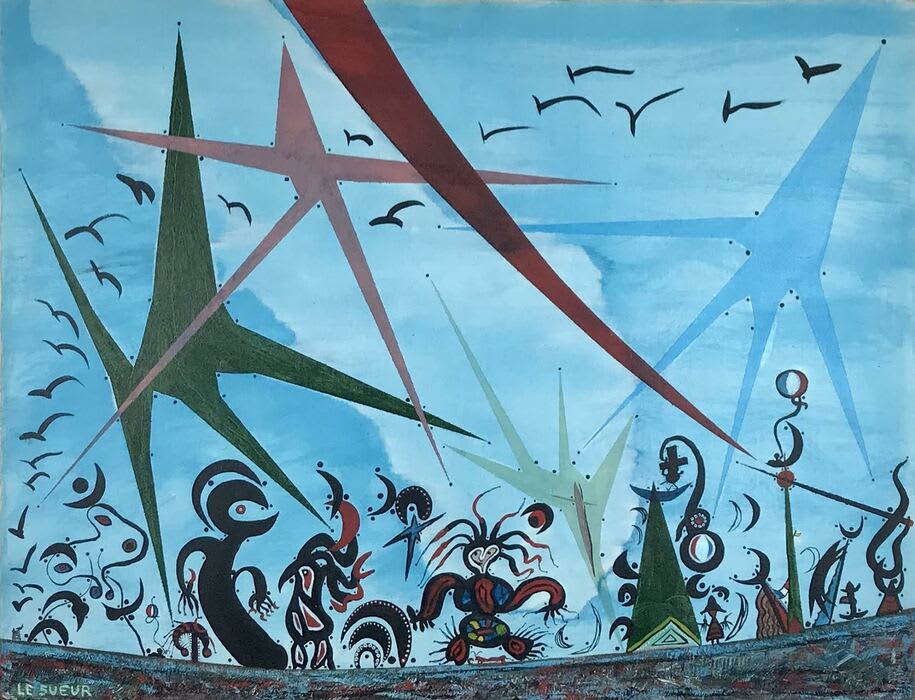
Maurice Sullins was entirely self-taught and did not start painting before he was sixty years old. Legend has it a dream about a water fountain in France first compelled him to paint. Over the course of a short career spanning fifteen years (1970-1985), he produced some 1,200 paintings, most of which have never been seen before.
Born on March 26, 1910 in Medora, Illinois, he was the third child of Methodist minister Van Buren Sullins and Jennie Le Grand, whose French heritage greatly influenced his work. After receiving a Bachelor’s in Geography at the University of Illinois at Urbana-Champagne in 1934, he moved to Joliet with his wife Mary in 1940, where he worked various jobs before becoming an aircraft detailer at the municipal airport. Thirty years later in April 1970, he picked up a paintbrush. Armed with an insatiable appetite for reading and a vivid imagination, he became a true master of his craft with a total command of color, composition and technique.
Although Sullins rarely traveled beyond Joliet, he was proud of his French heritage and considered himself an American-French painter, often signing his paintings using his mother and grandmother’s maiden names, Le Grand and Le Sueur. Many of his works reference French, European and American masters and are set in brilliantly imagined scenes in Tahiti, France, Spain or Chicago. Although he never copied other artists’ work, he transformed and construed famous recognizable motifs into his own fresh and unique painterly language. He used acrylic on canvas or canvas board, largely worked with 1½ inch and 2 ½ inch brushes and never sketched beforehand. He manipulated his pigment with combs or brush handles and worked with masking tape to form elements of his composition, a technique he referred to as “X-outs.” Sullins would hold the paint tube close to the canvas, squeeze and pull it up, a technique he referred to as the “eye stop.” His methods of applying paint had many terms including the “Naughty Line,” a horizon line representative of Mother Earth that forms the lower back and buttocks of a female figure; a wavy line squeezed directly from the tube was a “Master Stroke”; a “Grand Stroke” was a horizontal line made in one sweep and a “Grand Sweep” was a horizontal line that went off the canvas and “into eternity.”
Maurice Sullins painted for his own satisfaction and was never interested in showing his work. It wasn’t until he stopped painting in 1986 that he decided to do so. An introduction to a columnist at the Chicago Tribune led to one of several enthusiastic articles, attracting collectors and resulting in a retrospective at the Illinois State Museum in 1988. The exhibition received critical acclaim and the following year, the SEITA Museum in Paris held a solo show for Sullins during the centennial celebration of the Eiffel Tower. The Frank J. Miele Gallery in New York City then represented his work for several years.
Maurice Sullins died on March 21, 1995 at 84 years old. His family placed the paintings in storage, where they remained out of sight for twenty-two years.
In 2017, White Color became the official representative of the estate and presented his first exhibition since 1995 in Chicago that same year. Produced in partnership with the French Consul General of Chicago, the show was met with great excitement, drawing a large crowd and marking the beginning of a series of events re-introducing his works to the public.
White Color Studio's exhibitions of Maurice Sullins are world premieres for many of the works being shown.



